What is GC MS?
GC MS is the Gas Chromatogram and Mass spectrometry. In short, it is called the GC M. G for Gas, C for Chromatogram, and M for mass. Usually, people write in short as a GC M.
I hope you understand this short form of Gas Chromatogram and mass spectrometry
Gas Chromagrama and Mass spectrometry is a very useful machines for the identification of geochemical organic molecules or molecular fossils called biomarkers.
What are the components of GC MS?
GC M has two main components
1. GC
GC is the oven attached to the mass spectrometry. The main function of GC is to separate the organic molecules for the injected samples in the GC oven which are traveling through the 30 m long coil. During this traveling through the 30 m long coil, the organic molecules are separated one by one based on the molecular weight of the organic molecules.
Let’s give an example;
Suppose there are thousands of molecules of molecular weights ranging from 100 to 500 ng/mole. Based on the lighter molecules they will move faster due to the heat of the oven through the 30 m long coil and reach the mass spectrometry part where they will be detected by the mass spectrometry detector.
2. Mass Spectrometry
In this way, all the molecules will be detected and the computer connected with the detector will make a curve of the travel time in the monitor of the computer based on the molecular weights. Then we can identify that molecule based on the eluting time and retention time of the specific molecules. The retention time is usually the same time for specific molecules. Like Methen will come at 2 minutes suppose.
For more details on how the GC MS Works Please read this article
GCMS Machine How does GCMS work
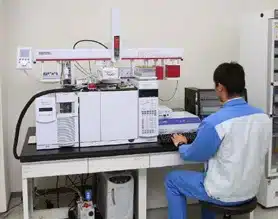
Gas Chromatography (GC) and Gas Chromatography-Mass Spectrometry (GC-MS) are analytical techniques used in chemistry and analytical chemistry to separate and identify chemical compounds in a sample.
Here’s a breakdown of the key differences between GC and GC-MS, the process of GC-MS analysis, GC-MS software, and the advantages of GC-MS over Liquid Chromatography-Mass Spectrometry (LC-MS):
- GC vs. GC-MS:
- GC (Gas Chromatography): GC is a technique used to separate and quantify volatile or semi-volatile compounds in a mixture. It relies on the principle of partitioning a sample between a mobile phase (a gas) and a stationary phase (typically a coated column). Compounds in the sample interact differently with the stationary phase and the mobile phase, causing them to separate based on their chemical properties such as volatility and polarity. GC does not provide information about the identity of separated compounds.
- GC-MS (Gas Chromatography-Mass Spectrometry): GC-MS combines the separation capabilities of GC with the identification and quantification capabilities of mass spectrometry. In GC-MS, after compounds are separated by GC, they are introduced into a mass spectrometer, where they are ionized and fragmented. The resulting mass spectra provide information about the molecular structure of the compounds, allowing for their identification.
- Process of GC-MS Analysis:
- Sample Preparation: The sample is prepared by extracting and concentrating the analytes of interest. It may involve sample extraction, derivatization, and other sample-specific procedures.
- Gas Chromatography (GC): The prepared sample is injected into a GC system, where it is vaporized and separated on a chromatographic column based on its chemical properties.
- Mass Spectrometry (MS): The eluent from the GC column enters the mass spectrometer, where it is ionized (usually by electron impact) and fragmented. The resulting mass spectra are used for compound identification.
- Data Analysis: GC-MS data is analyzed using specialized software to identify compounds by comparing their mass spectra to a reference database and to quantify them based on the area under their chromatographic peaks.
- GC-MS Software: GC-MS software is used to control the instrument, collect data, and process the results. It typically includes features for data acquisition, peak detection, library searching (for compound identification), and quantification. Popular software packages for GC-MS analysis include Agilent MassHunter, Thermo Fisher Xcalibur, and Shimadzu GCMSsolution, among others.
- Advantages of GC-MS over LC-MS:
- Selective Analysis: GC-MS is highly selective for volatile and semi-volatile compounds. It excels at separating compounds with similar chemical properties, making it suitable for a wide range of applications, including environmental analysis, food analysis, and drug testing.
- High Sensitivity: GC-MS can detect compounds at very low concentrations, often in the parts per billion (ppb) or even parts per trillion (ppt) range, making it suitable for trace analysis.
- Robustness: GC-MS systems are known for their reliability and robustness, especially when analyzing volatile compounds.
- Library Databases: Extensive mass spectral libraries are available for compound identification, enhancing the confidence in results.
However, it’s important to note that the choice between GC-MS and LC-MS depends on the nature of the compounds being analyzed, their volatility, and other specific analytical requirements. LC-MS is better suited for non-volatile and polar compounds, and both techniques have their respective strengths and limitations.
Learn More on the Topics of GC MS:
Portable GC-MS: All-in-1 Versatile Solution
GCMS Machine
GCMS Machine; How does gcms work: this is a common question for the students or the beginners who are new in the gcms working environments in the lab. Like me, I was also very much curious about the mechanism of how does gcms work. When I was in the Tohoku University lab, my supervisor Prof Kunio Kaiho gave me the opportunity to learn how to work on the GCMS/MS. In the Kaiho Lab basically, I use the GCMS/MS which is one step advanced from the GCMS.
How does gcms work?
Let’s talk about an example phenomenon. If you through a ball rolling in the ground depending on the size and weight of the ball it becomes faster and slower. The less light and small size goes faster and heavier ones will go slower. The same mechanism works in the GCMS techniques. The lighter molecules (Biomarker) will come faster and the heavier ones will come later in the GC detector and create a peak in the connected computer.
What is GCMS Machine?
The GCMS is a stand-alone biomarker identifying machine by Agilent technology. The GCMS Machine technology has two parts one is GC (gas chromatography) or simply the sample separating technology which has an oven in it to heat the inserted sample in it to a liquid form.
Another part is the detector called the mass spectrometer which has some detector to identify the coming molecules from the GC side and connected them to the computer. The GCMS/MS is the advanced technology which and double mass detector than a simple GCMS machine. The GCMS machine and the GCMS/MS machine are produced by the Agilent company.
How does gcms work: 6 Functions
For more please visit the blog:
How does gcms work?
For buying the GCMS Machine, Please visit the original Agilent company https://www.agilent.com/.
What is full scan GCMS mode
In full scan gcms, virtually all fragments ions are generated with each scan of the magnet or quadrupoles (50-600 amu) and recorded. In the full scan methods, no data are lost but extensive computer storage are required. Complete mass spectra for the identification of compounds can be generated from full scan analysis.
In the full scan mode, several hundred ions per scan (~3 seconds) resulting in <0.0075 seconds of dwell time per mass. By comparison SIM acquisition records at (~10 ions/ second) resulting in a longer dwell time (~0.01 second/ion) and an order of magnitude better sensitivity and signal to noise ratio.
Thus SIM is preferred over full scan data acquisition for quantitively biomarker analysis, even though the same kind of mass chromatograms can be displayed from full scan gcms analysis.
In the full scan GCMS mode, the machine scan over range m/z 60-600 in every three seconds (i.e. over 180 ions/second). About 1 nmol of each compound is required for a reliable spectrum comparable to that required for a discernible peak by flame ionization detection in gas chromatography (GC)
The advantages of different mode of GCMS analysis:
Selected ion monitoring (SIM/GCMS) mode or Multiple ion detection mode (MID/GCMS) or selected ion recording (SIR/GCMS)
In the selected ion monitoring (SIM/GCMS) mode or Multiple ion detection mode (MID/GCMS) or selected ion recording (SIR/GCMS) the machine scan only selected ions (e.g. m/z 217, m/z 191, m/z 253, etc) using a dwell time of 100 milli seconds/ion. Depending on the instrument ~1 pmol is required for a reliable response when only two or three selected ions are monitored. In the result, chromatograms of selected ions can be used as fingerprints for the selected compound type (e.g. steranes, hopanes, monoaromatic steroids).
The advantage of this SIM/GCMS mode is the longer dwell time per ion results in better sensitivity compared with the full scan GC MS mode. In this mode the scientist need to know the retention time and fragmentation characteristics of the molecule to be studied. In order to get the unknown data sometimes full spectral data are used and need hard work.
Full scan GCMS data acquisition mode;
In the full scan GCMS mode, the machine scan over range m/z 60-600 in every three seconds (i.e. over 180 ions/second). About 1 nmol of each compound is required for a reliable spectrum comparable to that required for a discernible peak by flame ionization detection in gas chromatography (GC). Full scan GCMS method provide both the mass spectra for the structural elucidation and chromatograms of all ions.

The scientist can compare the mass spectra and ion chromatogram of identification of each specific compounds. The advantages of this Full scan GCMS mode allow tentative structural elucidation. Unlike Selected ion monitoring (SIM/GCMS), no data are discarded. It use more computer disk space and has lower sensitivity or signal to noise ratio due to shorter dwell time than SIM mode.
Parent mode GCMS/MS:
In the parent ion mode of a triple quadrupole or other tendem instrument, the third quadrupole (Q3) monitors daughter ions (e.g. m/z 217) and the first quadrupole (Q1) scans for all possible precursors (parent) ions. Both Q1 and Q2 are normally operated in SIM mode for higher sensitivity.
Selected precursors that are allowed to pass through Q1 undergo collision -activated decomposition (CAD) when they collide with neutral target gas in the second quadrupole (Q2). In the Parent mode GCMS/MS provides imporived sensitivity and signal to noise ratio with other modes of analysis. But it is more expensive than most of the instrument.
Parent mode metastable reaction monitoring MRM/GCMS;
Monitor a selected daughter ion (e.g. m/z 217) formed from molecular ions that decompose in the first field free region of a double focusing mass spectrometer. This is a commonly used form of GCMS/MS.
MRM/ GCMS offers advantages in sensitivity and signal to noise ratio that are similar to parent mode. GCMS/MS using a tandem instrument. It uses a double focusing magnetic instrument which may be more readily available than a tandem instrument.
Portable GC-MS: A Versatile and Convenient Solution
If you’re in the market for a gas chromatography-mass spectrometry (GC-MS) system, you may be wondering about the portability of these instruments. Portable GC-MS systems are becoming increasingly popular due to their ease of use and versatility. They can be used in a variety of settings, from the lab to the field, making them an attractive option for many users.
How Much Does a Portable GC-MS Cost?
One of the most common questions about portable GCMS systems is how much they cost. The price of a portable GC-MS can vary widely depending on the features, specifications, and brand of the instrument. One popular option is the Agilent 7000 GC-MS system, which is known for its high performance and reliability.
The Agilent 7000 GC-MS system is a powerful analytical tool that is capable of detecting and identifying a wide range of compounds with high sensitivity and accuracy. The system is also known for its ease of use and versatility, making it a popular choice for many users.
Is GC-MS Portable?
While traditional GC-MS systems are not portable, there are now many portable options available on the market. Portable GCMS systems are designed to be lightweight, compact, and easy to transport. They can be used in a variety of settings, including fieldwork and on-site testing.
What is the Smallest GC-MS?
If you’re looking for the smallest GC-MS system available, you may be interested in the Torion T9 portable GC-MS system. This compact instrument is designed for on-site testing and is small enough to fit in the palm of your hand. Despite its small size, the Torion T9 is a powerful analytical tool that is capable of detecting and identifying a wide range of compounds with high sensitivity and accuracy.
What is the Price of the Torion T9 Portable GC-MS System?
The price of the Torion T9 portable GC-MS system can vary depending on the vendor and any additional features or accessories included. However, as with any analytical instrument, the Torion T9 is an investment that can provide significant benefits and cost savings over time.
Discover and Compare Portable GC-MS Systems
If you’re interested in a portable GCMS system, there are many options available on the market. Some popular options include the 5975T Low Thermal Mass (LTM) Transportable GC/MSD from Agilent Technologies, which is known for its high performance and reliability.
When comparing portable GC-MS systems, it’s important to consider factors such as sensitivity, accuracy, ease of use, and portability. Additionally, it’s important to consider your specific needs and use cases to find the system that will best meet your requirements.
If you’re looking for a portable GCMS system, there are many options available on the market. While the cost can vary depending on the features and brand of the instrument, a portable GCMS can provide significant benefits and cost savings over time. Whether you’re in the lab or in the field, a portable GC-MS system can be a powerful analytical tool for detecting and identifying a wide range of compounds.
Here’s a table comparing the features of a Portable GC-MS and the Agilent 7000 GC-MS system:
It’s worth noting that these are generalizations and that the exact features and specifications of portable GC-MS systems and the Agilent 7000 GC-MS system can vary depending on the brand and model.
When considering a GC-MS system, it’s important to consider your specific needs and use cases to determine which system will best meet your requirements.
What are the benefits of Portable GC-MS?
Portable GC-MS systems offer several benefits over larger, benchtop GC-MS systems. Here are some of the main advantages of portable GC-MS:
Portability: As the name suggests, portable GC-MS systems are designed to be easily transported and used in the field, which is ideal for applications where samples need to be analyzed on-site. This makes portable GC-MS systems ideal for environmental monitoring, forensic investigations, food safety inspections, and other similar applications.
Speed: Portable GC-MS systems are often faster than larger GCMS systems. They typically have a shorter start-up time, faster analysis times, and require less maintenance.
Lower Cost: Portable GC-MS systems can be more affordable than larger, benchtop GC-MS systems, making them a great choice for smaller labs or for those on a tighter budget. Additionally, they may require less energy and consumables to operate, further reducing their overall cost.
Ease of Use: Portable GC-MS systems are often designed to be user-friendly and easy to operate, even for those with minimal experience. Many systems are automated, with features like intuitive touchscreen interfaces and software that simplifies data analysis.
Versatility: Portable GC-MS systems are versatile and can be used in a variety of applications. They can detect and identify a wide range of compounds, including volatile organic compounds, semi-volatile organic compounds, and inorganic compounds.
The application of Portable GC-MS
Portable GC-MS systems have a wide range of applications in various fields. Here are some of the common applications of portable GC-MS:
Environmental Monitoring: Portable GCMS systems are frequently used to analyze air, water, and soil samples in the field to identify and quantify volatile and semi-volatile organic compounds, such as polycyclic aromatic hydrocarbons (PAHs) and volatile organic compounds (VOCs). These systems can be used for monitoring pollution and contamination levels in the environment, assessing the effectiveness of remediation efforts, and investigating environmental incidents.
Food and Beverage Testing: Portable GCMS systems can be used for food and beverage testing to identify and quantify various contaminants, such as pesticides, preservatives, and mycotoxins. They can also be used to analyze the aroma and flavor profiles of food and beverages, which is important for quality control and product development.
Forensic Investigations: Portable GCMS systems are used in forensic investigations to analyze trace evidence, such as fibers, paint chips, and drugs, in the field. They can also be used for on-site drug testing, which is critical for law enforcement and workplace safety.
Pharmaceutical Analysis: Portable GCMS systems can be used to analyze pharmaceuticals and drug formulations, including raw materials and finished products. They can also be used to identify and quantify impurities in drugs and to monitor drug stability during storage and transportation.
Petrochemical Analysis: Portable GC-MS systems are used in the oil and gas industry for on-site analysis of crude oil, natural gas, and petroleum products. They can be used to identify and quantify various compounds, including hydrocarbons and sulfur compounds, which is important for quality control and safety.
Where to buy the portable GC-MS?
Portable GC-MS systems can be purchased from various manufacturers and suppliers. Here are some options to consider:
Agilent Technologies: Agilent is a leading manufacturer of analytical instruments, including portable GCMS systems. Their portable GC-MS system, the 5975T Low Thermal Mass (LTM) Transportable GC/MSD, offers high sensitivity, fast analysis, and easy portability. Agilent offers a range of purchasing options, including direct purchase, lease, and financing.
Shimadzu: Shimadzu is another leading manufacturer of analytical instruments, offering a range of portable GCMS systems. Their portable GC-MS system, the miniGC Plus, is a compact and lightweight system that offers fast analysis and high sensitivity. Shimadzu offers direct purchase and lease options for their instruments.
Markes International: Markes International is a manufacturer and supplier of analytical instruments, including portable GC-MS systems. Their portable GC-MS system, the CIA Advantage, is a compact and rugged system that offers fast analysis and easy portability. Markes International offers direct purchase, lease, and rental options for their instruments.
Restek: Restek is a supplier of analytical instruments and consumables, including portable GCMS systems. They offer a range of portable GC-MS systems from various manufacturers, as well as accessories and consumables for these systems. Restek offers direct purchase and leasing options for their instruments.
When purchasing a portable GC-MS system, it’s important to consider factors such as sensitivity, speed, ease of use, and cost. It’s also important to choose a reputable manufacturer or supplier who can provide reliable instruments and good customer support.
Where to buy the Torion portable GC MS?
The Torion T9 portable GC-MS system is manufactured by PerkinElmer, a leading analytical instrument company. You can purchase the Torion T9 portable GC-MS system directly from PerkinElmer or through their authorized distributors.
To purchase the Torion T9 portable GC-MS system directly from PerkinElmer, you can visit their website and request a quote. They offer a range of purchasing options, including direct purchase, lease, and financing. You can also contact PerkinElmer’s sales team for more information and assistance with your purchase.
Alternatively, you can purchase the Torion T9 portable GC-MS system through PerkinElmer’s authorized distributors. PerkinElmer has a network of distributors worldwide who can provide local support and service for their products. You can find a list of PerkinElmer’s authorized distributors on their website and contact them directly to purchase the Torion T9 portable GC-MS system.
When purchasing the Torion T9 portable GC-MS system, it’s important to consider factors such as sensitivity, speed, ease of use, and cost. It’s also important to choose a reputable manufacturer or supplier who can provide reliable instruments and good customer support. PerkinElmer is a well-known and respected manufacturer of analytical instruments, and the Torion T9 portable GC-MS system has received positive reviews for its performance and portability.
Comparison between the Torion Portable GC MS and Shimadzu miniGC Plus
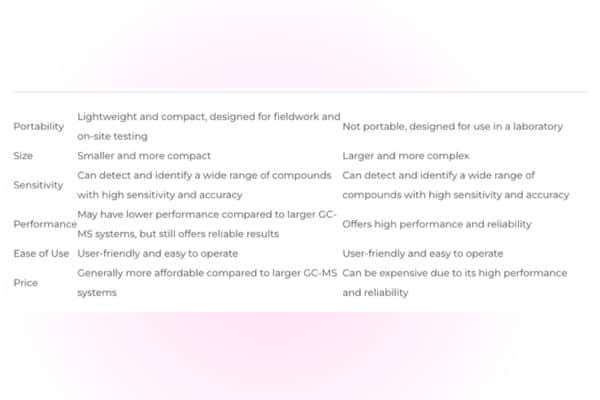
Overall, portable GC-MS systems offer a convenient and efficient solution for on-site analysis in a variety of fields, including environmental monitoring, food and beverage testing, forensic investigations, pharmaceutical analysis, and petrochemical analysis. They provide fast and accurate results, making them an essential tool for many applications.
Author:
Dr. Raman Kumar Biswas
Professor
Contanct: ramanbiswas@pstu.ac.bd

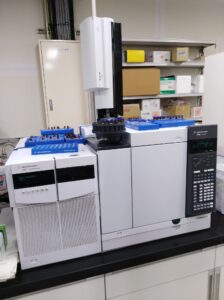


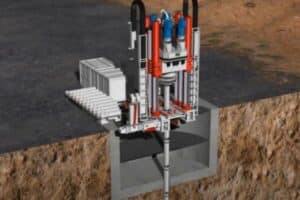


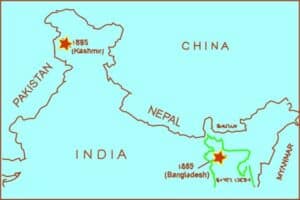
More Stories
GC M: 2 Main Componets of GCMS
Agilent 7000 GC MS Price: Portable GC Review
Used GC MS: 1st Choice for New Lab